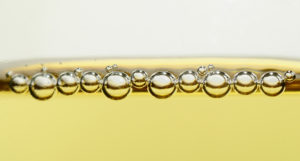Everyone knows that sparkling wine is traditional during the holidays and when celebrating special occasions, but what about the rest of the year? It seems such a shame to relegate the sheer pleasure of some of the world’s best wines to a few short moments on the calendar. Champagne and sparkling wine are miracles of science. Think about it – tiny bubbles harnessed in bottles spreading good cheer from the moment they pop open! What’s not to like? Why not make every day a celebration?
A quick reminder – all champagnes are sparkling wines but not all sparkling wines are champagne. What this means is that true champagne can only be produced within the borders of northern France’s Champagne region. Any other wine produced outside these boundaries is legally barred from using the moniker “champagne.” Sparkling wines in the rest of France are referred to as “cremant” or “mousseux.”
What’s so special about champagne anyway? Champagne has been the preferred choice of royalty for coronations, weddings, christenings, and other noble celebrations for centuries. Decidedly pricier than most sparklers, champagne has a certain prestige that comes with the name, and for good reason. With its intrinsic freshness, complex palate, rich aromas, and bright acid, French champagne is the benchmark of quality against which all other sparkling wines are judged.
The production method of a sparkling wine affects the flavor, aromas, and overall quality of the wine. The Traditional Method (or “Methode Champenoise”) creates the tiniest bubbles and a soft, creamy mouth feel. The Tank Method (also called “Charmat”) produces larger bubbles but still affords a pleasing sparkle. Carbonation creates the largest bubbles of all, with a somewhat harsh quality, not unlike soda pop.
The traditional method of production is required of all champagne-makers. They may not stray from the traditional varieties of grapes nor from the approved system of fermentation, bottling, and aging. In the rest of the world, this is not the case. With a few notable exceptions, such as Italy’s fine Franciacorta and Spain’s classic Cava, most sparkling wine producers can do as they please and use their wine as a canvas for their own creativity. As a result, we consumers can reap the harvest of wonderful sparkling wines from across the globe.
The high acid in champagne makes it a natural complement to fried food. Pop open a bottle with your favorite fried chicken, fried calamari, or even crispy French fries. For a simple snack, champagne and potato chips is a divine pairing. Rose champagnes and sparkling wines beautifully complement roasted game, poultry, pork, and lamb.
With summer at our doorstep, impress your friends with a hearty, sparkling red shiraz at your next barbeque. Bring a bottle of chilled suds to a picnic. The zippy acid is perfect with cheeses and charcuterie. For sweeter moments, sip a California demi-sec with crispy cookies, or try Moscato d’Asti with a lovely fruit salad. The difference between a meal and a feast is wine, and bubbles always add magic to the moment.
There’s something about a sparkle that lifts your spirits, tickles your nose, and dances on the palate. Good bottles of sparkling wine can be had for a song if you’re on a budget, or for thousands of dollars if you’re feeling indulgent. Truly, there’s something for everyone. Don’t wait for an occasion. Celebrate the now. There’s a world of flavor to be explored. With the wide variety of fabulous sparkling wine on the market today, there’s no reason not to enjoy one every day of the year.
Cheers!
Leave a Reply